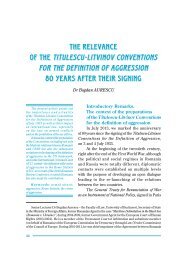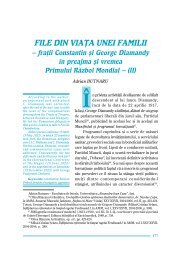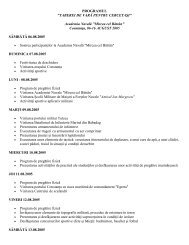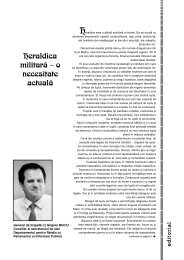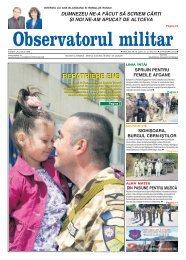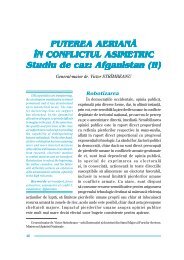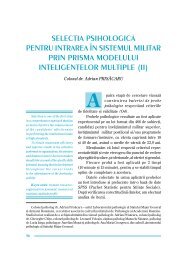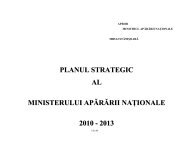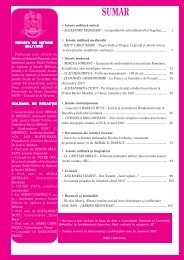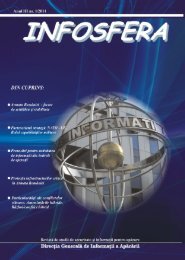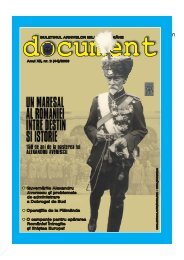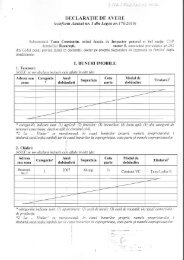Romanian Military Thinking
Romanian Military Thinking
Romanian Military Thinking
Create successful ePaper yourself
Turn your PDF publications into a flip-book with our unique Google optimized e-Paper software.
CONSIDERATIONS CONSIDERATIONS CONSIDERATIONS REGARDING<br />
REGARDING<br />
REGARDING<br />
REGARDING<br />
REGARDING<br />
THE THE THE THE THE “COMMAND<br />
“COMMAND<br />
“COMMAND<br />
“COMMAND<br />
“COMMAND<br />
AND AND AND AND AND CONTROL” CONTROL CONTROL CONTROL CONTROL CONCEPT CONCEPT CONCEPT CONCEPT CONCEPT<br />
Captain Ion DUMITRA{CU<br />
~ Coordinating Officer, EU <strong>Military</strong> Committee Working Group ~<br />
The article approaches the<br />
“command” and “control” concepts<br />
from their perspective of essential<br />
elements within a military system,<br />
which allow, through the agency<br />
of the commander, the organisation,<br />
functioning and fulfilment of his<br />
objectives.<br />
In the first part, the role and<br />
importance of command and control<br />
are presented, underlining the fact<br />
that, through them, military forces<br />
are provided with precise goal and<br />
direction. Then, command and<br />
control are defined in accordance<br />
with specialised documents, especially<br />
from American publications. Thus, the<br />
NATO terminology does not precisely<br />
define the content of the syntagm<br />
“command and control”, it rather<br />
defines the relations between the two<br />
terms, especially within the command<br />
arrangements that are specific to<br />
multinational operations.<br />
To conclude, the author states<br />
that a cultural change with regard<br />
to the organisational management<br />
is extremely necessary, so that it could<br />
be accepted by the military community<br />
as a basic element and not as a<br />
situational phenomenon.<br />
he syntagm “command and control”<br />
is frequently used in operational language<br />
and quite often met in military<br />
publications. As they reflect the very substance of any<br />
military system, command and control are key elements<br />
facilitating its organization, operation and reaching<br />
objectives, through the agency of the commander1 .<br />
Command and control become manifest, under<br />
various forms, within all human organizations, let them<br />
be less or more hierarchically structured, as essential<br />
functions, specific to organization and leadership.<br />
David Alberts, in his “Arrangements for Peace<br />
Operations” 2 T<br />
, noted the occurrence and separately<br />
emergence of the command and control concept within<br />
the military domain and industrial management,<br />
mainly as a result of the specific character of war.<br />
The time pressure and high costs caused by human<br />
error during wartime represent, in the author’s opinion,<br />
major characteristics that have influenced military<br />
thinking in establishing command’s architecture over<br />
time. In spite of its extensive use, command and control<br />
seem not to be accurately defined and thoroughly<br />
1 Marine Corps Doctrinal Publication, 1996.<br />
2 Alberts David and Hayes E. Richard, Command Arrangements<br />
for Peace Operations, 1985.<br />
13



